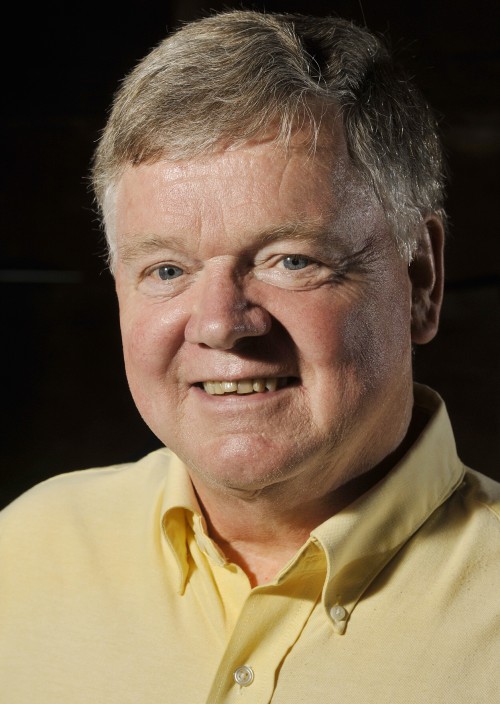Growing up the oldest of eight kids on Munjoy Hill, David Paul knows something about prejudice and the power of faith to overcome it.
He learned to hold his own and made friends among the black, Italian and Jewish families that populated Portland’s working-class, waterfront neighborhood in the 1940s and 1950s. Through it all, the chapel at the Cathedral of the Immaculate Conception was a refuge.
“We were poor Irish Catholics, so we took the brunt of it, and when my father left, we took a little more,” said Paul, 67. “Whenever I had a problem, I’d go to the chapel and I’d work out a solution.”
Paul returned to his East End roots in 2005, when he joined the effort to restore the historic Abyssinian Meeting House on Newbury Street.
The venture showed him that Portland’s African American and Irish Catholic communities share similar experiences in their past struggles for freedom of worship.
Paul joined the restoration committee at the urging of its chairman, Leonard Cummings Sr., another Munjoy Hill native who had worked with Paul at the telephone company.
The volunteer committee needed someone to keep the books for a long-term, multimillion-dollar project. Paul had ideal experience as a former business manager for the telephone workers’ union. He’s also a real estate agent who has renovated several homes.
“My first meeting with the committee, they elected me treasurer,” Paul said. “I got involved because of my background and my friendships, but it was the building that grabbed me.”
Built in 1828, the Abyssinian is the third-oldest African American meeting house, after churches in Boston and Nantucket.
In 1826, six black men – Reuben Ruby, Caleb Jonson, Clemant Tomson, Job Wentworth, Christopher Manuel and John Sigs – published a letter in a local newspaper, announcing their plan to build a church for Portland’s black community. They no longer wanted to be relegated to the back pews of Portland’s white congregations.
“Pardon our misapprehensions, if they be such,” the men wrote, “(but) we have sometimes thought our attendance was not desired.”
The letter still amazes Paul.
“They felt they had to apologize, and they just wanted to build their own church,” he said. “They had to be terribly strong in their beliefs, not only in their religion but in themselves as people.”
Maine’s Irish and Roman Catholic communities faced similar prejudices, perpetuated by anti-immigrant, anti-Catholic factions. During the 1850s, churches in Bath and Lewiston were burned and Father John Bapst was tarred and feathered by a mob in Ellsworth.
Portland’s first Catholic church, St. Dominic’s, was built at Gray and State streets in 1833. As immigration increased and the city’s Catholic population grew, the original building was torn down to make way for a larger church, built by Irish immigrants.
While the church was under construction in the early 1890s, Irish longshoremen guarded the property at night, armed with baseball bats and two-by-fours, to prevent vandals from setting the building on fire before it was finished.
At that time, Maine’s Catholics were led by Bishop James Augustine Healy, who was the first black priest and bishop in the United States, though he identified himself and was accepted as white.
Healy was born in Georgia, a son of an Irish immigrant plantation owner and a mixed-race slave. He was bishop of Maine from 1875 to 1900, serving at the Cathedral of the Immaculate Conception, a few blocks from the Abyssinian.
The Abyssinian thrived through the 1800s as a religious and cultural center for Portland’s black community. It also operated a school for black children when the city’s schools were segregated.
The Abyssinian’s membership took a serious blow in 1898, when the SS Portland was caught in a terrible storm and sank during a return trip from Boston.
Nearly 200 people died, including 19 crew members who attended the Abyssinian. Two of them were church trustees. “The congregation never recovered,” Paul said.
The church closed in 1917, was sold and later remodeled into six apartments. The renovations destroyed many original features, including much of the hand-hewn timber roof structure. The city eventually claimed the run-down property for back taxes and sold it to the Committee to Restore the Abyssinian for a small fee.
The restoration began in 2006, the year that the Abyssinian was listed on the National Register of Historic Places. A year later, it was added to the National Underground Railroad Network to Freedom.
With Paul overseeing contracts and spending, the restoration committee has completed about $700,000 in rehabilitation work, funded largely by grants. Historians, archeologists and restoration carpenters have peeled away decades of destructive renovations and fixed a variety of structural problems, from a wet basement to a leaking roof.
It will take another $3 million to transform the building into a museum and learning center. Paul hopes to see it happen. He believes the Abyssinian should stand as a symbol of civil rights and religious freedom for all.
“I grew up with prejudice against who I was and what I believed,” Paul said. “I never want anyone to deal with that.”
Staff Writer Kelley Bouchard can be contacted at 791-6328 or at: kbouchard@pressherald.com
Send questions/comments to the editors.



Success. Please wait for the page to reload. If the page does not reload within 5 seconds, please refresh the page.
Enter your email and password to access comments.
Hi, to comment on stories you must . This profile is in addition to your subscription and website login.
Already have a commenting profile? .
Invalid username/password.
Please check your email to confirm and complete your registration.
Only subscribers are eligible to post comments. Please subscribe or login first for digital access. Here’s why.
Use the form below to reset your password. When you've submitted your account email, we will send an email with a reset code.